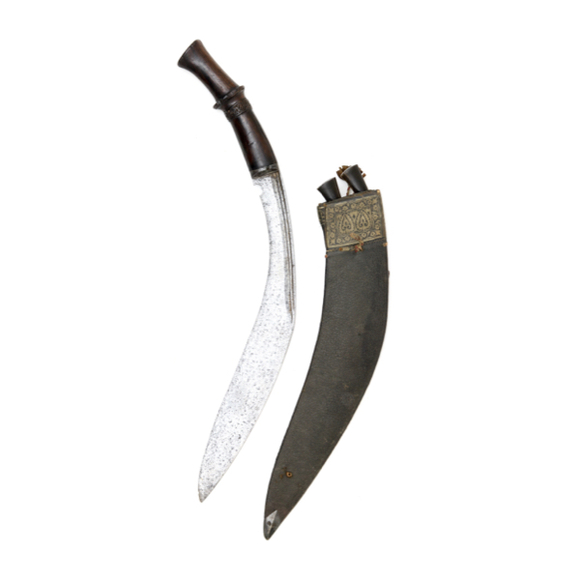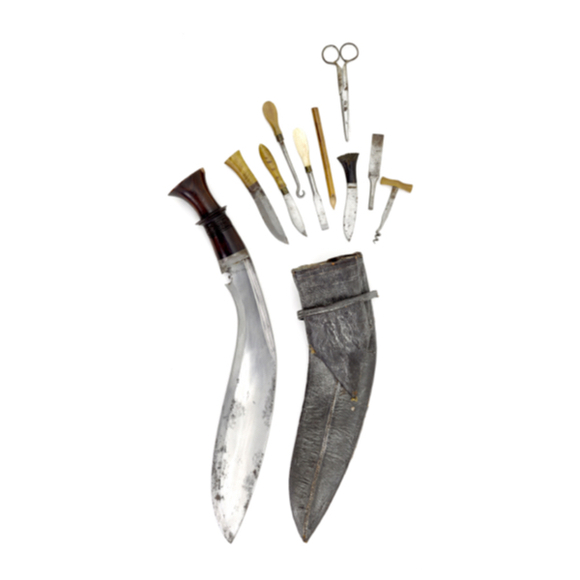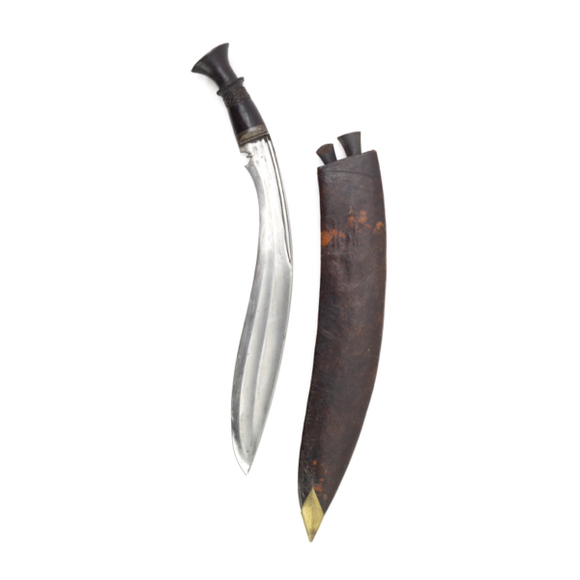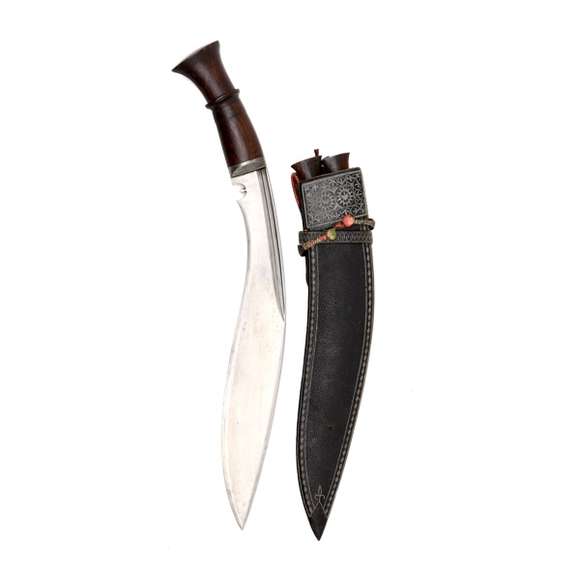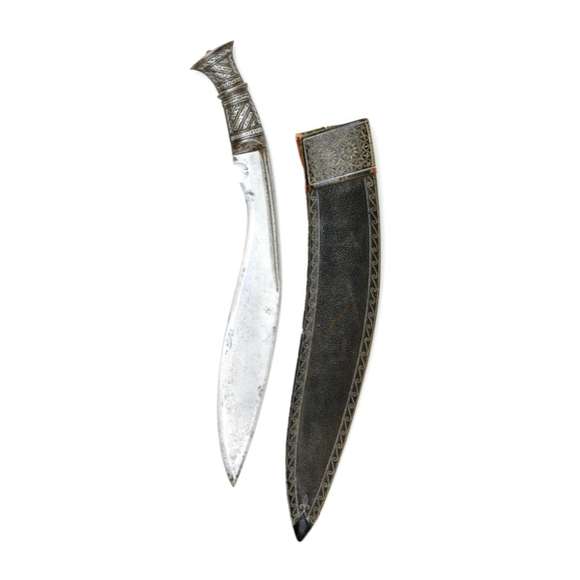Early type with very shallow notch in the blade and little flare in the pommel.

Sheathed 48 cm
Khukurī 45 cm
34.7 cm
Base 5.8 mm
Shoulder 5 mm
5 cm from tip 4.3 mm
Narrowest 26 mm
Widest at belly 46 mm
436 grams
11.5 cm from hilt
Iron, steel, gold, wood, leather, silver
Probably somewhat West of Nepal
Circa 1800-1820s
From a Berlin collection
Description
This khukurī is based on a very early, very high-quality blade. The long and slender blade profile is somewhat in-between the hanshee and early conventional khukurī. It has a shallow fuller in the upper section of the blade, and within the upper section of that fuller is a row of segmented grooves. They alternate between single grooves with pointed ends and segments with three narrow grooves. The wider ones have gold overlay in them over crosshatching. The notch (kaudi) is very shallow, with a narrow protrusion. Above it on one side is an eyelash engraving.
Unusual for a khukurī blade, the spine is rounded as is the case on Persian shamshīr blades. A conventional khukurī has a ridged spine, like Japanese swords tend to have.
Hilt
The hilt consists of an iron bolster on a wooden grip. The grip is shaped like that of a Persian or North Indian kard dagger.
Scabbard
The scabbard, at first glance, looks like your typical khukurī scabbard but an important difference is that a significant portion of the hilt sinks into the scabbard, again more like a Persian kard than a khukurī. The upper silver mount is narrow, with a ring on the back instead of the facing side of the scabbard; again as seen on some kard daggers. The silverwork, however, is quite Nepalese in nature, with a series of hooks called haikale buṭṭā. The chape however is more Persian in form.
Dating & attribution
Let's start with the easier part; when. It probably dates from the early 19th century. I think roughly the 1800-1820s. It is tempting to think it's an earlier blade mounted later, but the rounded spine is in line with other Persian elements in its construction, which makes it puzzling.
The Persian elements are likely because the Ghurkas expanded Westwards in the late 18th century and many remained in this area. Here they inevitably came into contact with wearers and users of the kard. The weapon is most likely a one-off, a quirky commissioned piece by someone who had a liking for kard daggers but preferred the khukurī blade. Whether this was an Indian, Nepalese, or even a European, we will never know.
As for where, the blade was most likely made by a Nepalese craftsman. Segmented grooves with gold became popular on Nepalese blades following the Sino-Nepalese War of 1788–1792, during which Chinese blades with these features were likely captured. Segmented gilt grooves remained popular on high-end kora and khukurī blades for a few decades into the 19th century.

Top; A fine Chinese pèidāo with golden grooves. Sold here, 2022.
Bottom: This khukurī.
The blade profile, cross-section and even the forging structure are all typical for Nepalese work. Khukurī blades made outside the culture always look a little off, and this doesn't. The craftsman probably did not work in Nepal, though, and may have been some distance West of Nepal to pick up all these design features from local weapons.
Comparable examples
I currently know of only one other kard-hilted khukurī. It is in the Metropolitan Museum in New York, accession number 6.25.830. It has a more utilitarian quality over it, but is interesting nonetheless. This time, it also features a crossguard. It is from the well-known George Cameron Stone collection, bequeathed to the museum in 1936.
Conclusion
A most unusual khukurī is combining a very high quality, early Nepalese blade with many features taken from Persian or Persian-inspired arms. Probably a one-off commission by someone operating West of Nepal.





20th century military khukurī with many different tools in its back pocket.
Very large presentation kukri from the Sundarijal Arsenal in Nepal.
An understated, elegant khukuri of substantial proportions with fine layered blade.
With iron, silver overlaid hilt. Its associated scabbard features fine quillwork.

